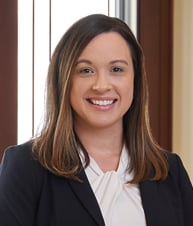A weekly summary of the precedential patent-related opinions issued by the Court of Appeals for the Federal Circuit and the opinions designated precedential or informative by the Patent Trial and Appeal Board.
Parus Holdings, Inc. v. Google LLC, Nos. 2022-1269, -1270 (Fed. Cir. (PTAB) June 12, 2023). Opinion by Lourie, joined by Bryson and Reyna.
Google filed IPR petitions challenging certain claims of two patents owned by Parus relating to an interactive voice system that allows a user to request information from a voice web browser. The Patent Trial and Appeal Board issued final written decisions holding the challenged claims unpatentable as obvious. The parties disputed whether two prior art references (“Kovatch” and “Kurganov-262”) qualified as prior art, and the obviousness determinations turned on those issues.
First, addressing whether Kovatch qualified as prior art, the Board declined to consider Parus’s arguments because Parus had failed to comply with 37 C.F.R. § 42.6(a)(3), which prohibits incorporation by reference. Next, addressing whether Kurganov-262 qualified as prior art, the Board considered whether the challenged claims were entitled to an earlier effective filing date based on a priority application. The Board ruled that the priority application did not provide written description support for the challenged claims, and as a result Kurganov-262 qualified as prior art. Parus appealed.
The Federal Circuit affirmed as to both determinations, and thus affirmed the Board’s conclusion that the challenged claims were unpatentable as obvious.
Regarding Kovatch, on appeal Parus did not dispute that it had incorporated its arguments by reference and therefore violated § 42.6(a)(3). The Federal Circuit ruled that, “for that reason alone, the Board’s disregarding of Parus’s arguments found to be in violation of the rule cannot be an abuse of discretion.” On the substance of Parus’s arguments, the Federal Circuit explained that “in an IPR, the petitioner bears the ultimate burden of persuasion on invalidity, which never shifts to the patent owner.” However, when a patent owner attempts to antedate an asserted prior art reference, as here, “the patent owner assumes a temporary burden of production.” That burden “cannot be met simply by throwing mountains of evidence at the Board without explanation or identification of the relevant portions.” The burden necessitates “some combination of citing the relevant record evidence with specificity and explaining the significance of the produced material in briefs,” but “here, Parus did neither.”
Regarding Kurganov-262, the Federal Circuit explained that the Board did not exceed its statutory authority under 35 U.S.C. § 311(b) by addressing whether the challenged claims had written description support under § 112. Although § 311(b) limits the scope of IPRs to the cancellation of claims based “only on a ground that could be raised under section 102 or 103,” the Federal Circuit stated that this language “merely dictates the grounds on which on IPR petition may be based, not the issues that the Board may consider to resolve those grounds.” In this case, Parus asserted that Kurnagov-262 is not prior art, and therefore the Board needed to determine whether the challenged claims satisfied the written description requirement.
In re Couvaras, No. 2022-1489 (Fed. Cir. (PTAB) June 14, 2023). Opinion by Lourie, joined by Dyk and Stoll.
John Couvaras filed a patent application claiming methods of increasing prostacyclin release in the systemic blood vessels of a human with essential hypertension. The increased prostacyclin release is achieved by co-administering two well-known types of antihypertensive agents: a GABA-a agonist and an Angiotension II Receptor Blocker (ARB). The Examiner rejected the claims as obvious in view of the prior art. Couvaras then appealed to the Patent Trial and Appeal Board, asserting that the prostacyclin release was unexpected and therefore should be patentable. The Board disagreed and affirmed the Examiner’s rejection, holding that the claimed result of an increased prostacyclin release was inherent in the obvious administration of the two known antihypertensive agents. Couvaras appealed.
The Federal Circuit affirmed, rejecting three arguments raised by Couvaras on appeal.
First, Couvaras argued that the Board erred in concluding that there was a motivation to combine the cited prior art. The Federal Circuit disagreed because “it is prima facie obvious to combine two compositions each of which is taught by the prior art to be useful for the same purpose, in order to form a third composition which is to be used for the very same purpose.” Couvaras did not challenge that the two claimed active agents (GABA-a and ARB) were known and, further, were known to be useful for the same purpose—alleviating hypertension. The Federal Circuit ruled that “this fact alone can serve as a motivation to combine because the idea of combining these compounds flows logically from their having been individually taught in the prior art.”
Second, Couvaras argued that the Board downgraded the patentable weight of limitations drawn to the antihypertensive agents’ mechanism of action by deeming them to be merely inherent. Couvaras asserted that even if the mechanism of action is inherent, the increased release of prostacyclin was unexpected. The Federal Circuit ruled, however, that “reciting the mechanism for known compounds to yield a known result cannot overcome a prima facie case of obviousness, even if the nature of that mechanism is unexpected.”
Lastly, Couvaras argued that the Board erred in weighing the objective indicia of nonobviousness, including unexpected results, teaching away, failure of others, and the length of time that elapsed between the initial discovery of GABA-a agonists and ARBs being useful in treating hypertension and Couvaras’s claimed method of co-administering these types of compounds. The Federal Circuit determined that substantial evidence supported all of the Board’s findings. For example, the Federal Circuit explained that “to establish unexpected results, Couvaras would have needed to show that the co-administration of a GABA-a agonist and an ARB provided an unexpected benefit.” No such benefit was shown.

